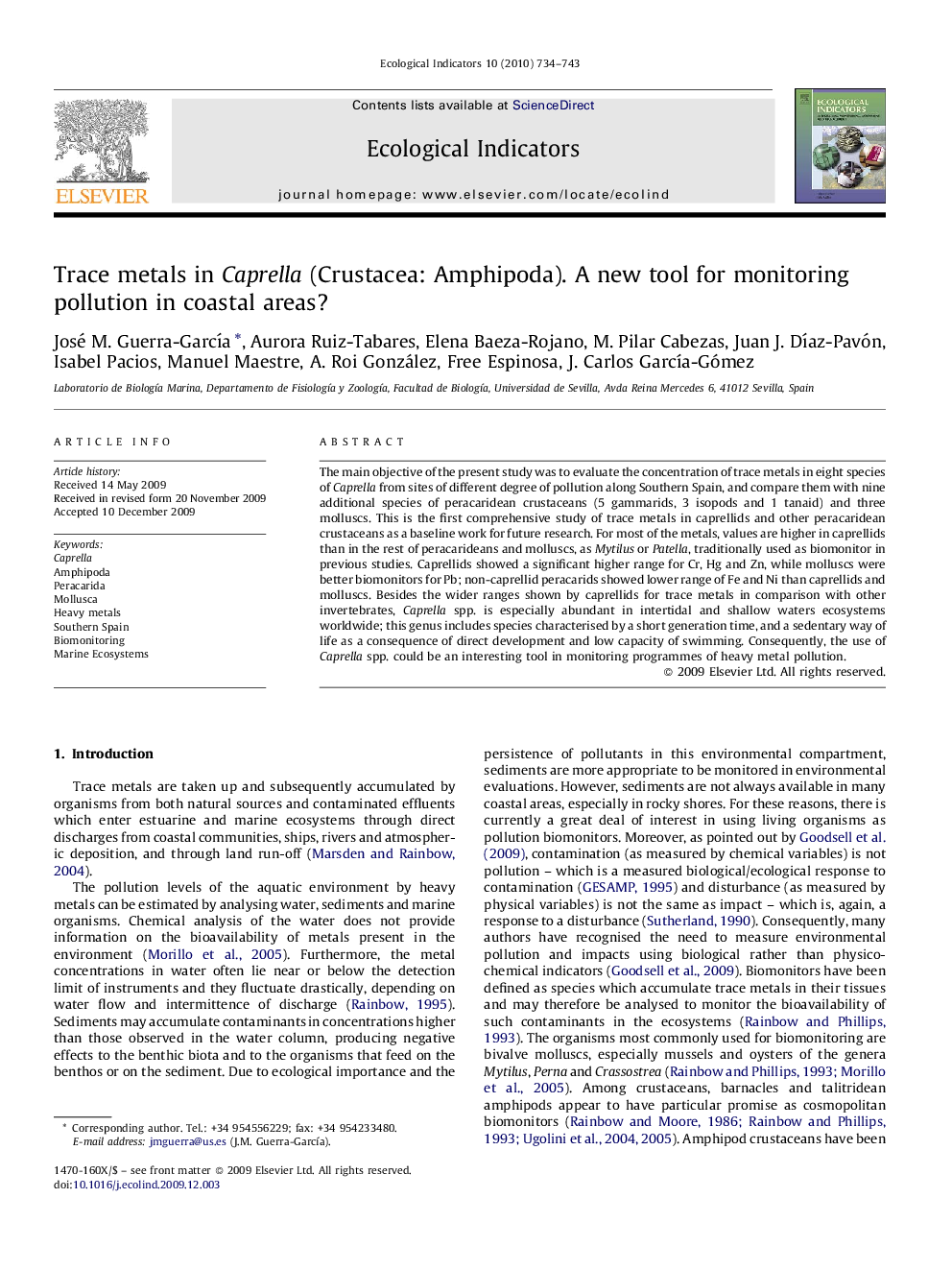| Article ID | Journal | Published Year | Pages | File Type |
|---|---|---|---|---|
| 4374216 | Ecological Indicators | 2010 | 10 Pages |
The main objective of the present study was to evaluate the concentration of trace metals in eight species of Caprella from sites of different degree of pollution along Southern Spain, and compare them with nine additional species of peracaridean crustaceans (5 gammarids, 3 isopods and 1 tanaid) and three molluscs. This is the first comprehensive study of trace metals in caprellids and other peracaridean crustaceans as a baseline work for future research. For most of the metals, values are higher in caprellids than in the rest of peracarideans and molluscs, as Mytilus or Patella, traditionally used as biomonitor in previous studies. Caprellids showed a significant higher range for Cr, Hg and Zn, while molluscs were better biomonitors for Pb; non-caprellid peracarids showed lower range of Fe and Ni than caprellids and molluscs. Besides the wider ranges shown by caprellids for trace metals in comparison with other invertebrates, Caprella spp. is especially abundant in intertidal and shallow waters ecosystems worldwide; this genus includes species characterised by a short generation time, and a sedentary way of life as a consequence of direct development and low capacity of swimming. Consequently, the use of Caprella spp. could be an interesting tool in monitoring programmes of heavy metal pollution.
